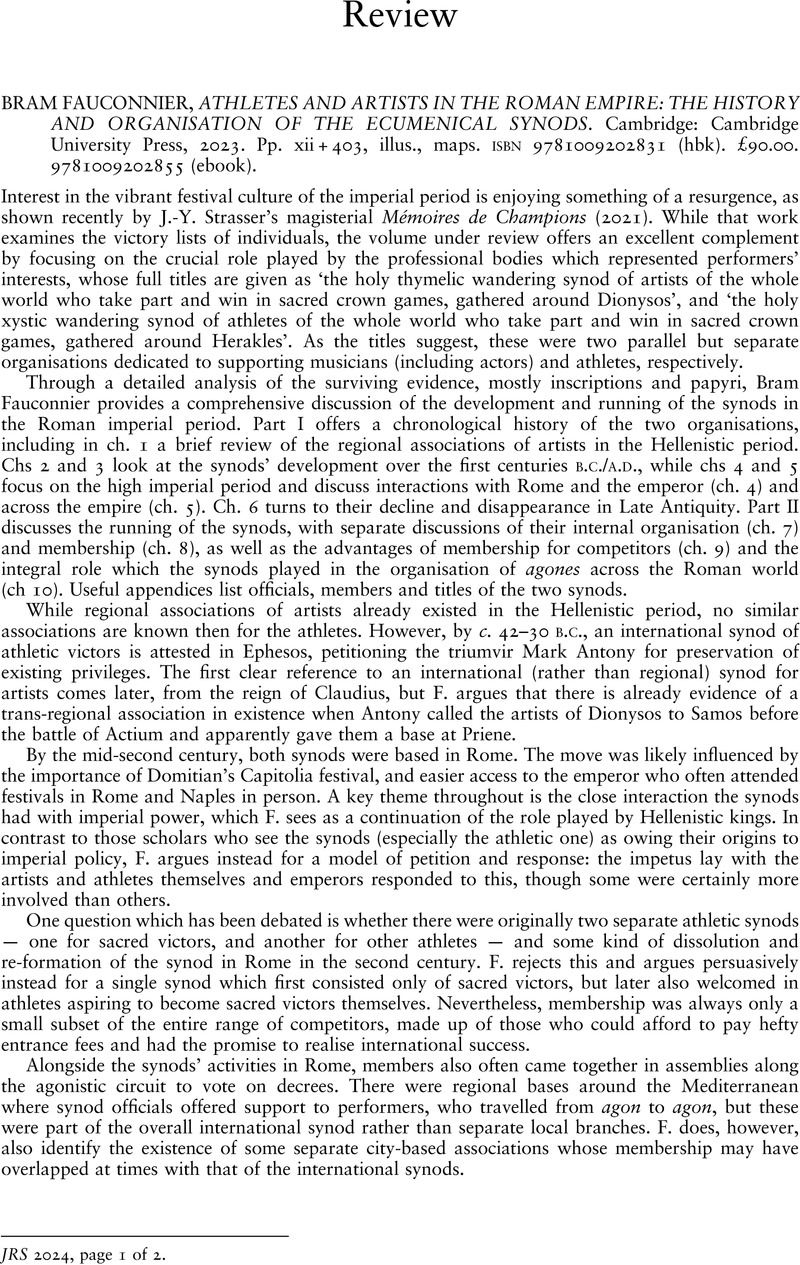No CrossRef data available.
Article contents
BRAM FAUCONNIER, ATHLETES AND ARTISTS IN THE ROMAN EMPIRE: THE HISTORY AND ORGANISATION OF THE ECUMENICAL SYNODS. Cambridge: Cambridge University Press, 2023. Pp. xii + 403, illus., maps. isbn 9781009202831 (hbk). £90.00. 9781009202855 (ebook).
Review products
BRAM FAUCONNIER, ATHLETES AND ARTISTS IN THE ROMAN EMPIRE: THE HISTORY AND ORGANISATION OF THE ECUMENICAL SYNODS. Cambridge: Cambridge University Press, 2023. Pp. xii + 403, illus., maps. isbn 9781009202831 (hbk). £90.00. 9781009202855 (ebook).
Published online by Cambridge University Press: 18 March 2024
Abstract
An abstract is not available for this content so a preview has been provided. Please use the Get access link above for information on how to access this content.

- Type
- Reviews
- Information
- Copyright
- Copyright © The Author(s), 2024. Published by Cambridge University Press on behalf of The Society for the Promotion of Roman Studies


